Soon to be: Blue Safari Fly Fishing, a new name with the same extraordinary Seychelles adventures.
BEST ISLANDS FOR CATCHING THIS SPECIES

Alphonse Atoll
Farquhar Atoll
Astove Atoll
Cosmoledo Atoll

Bonefish on Fly
Bonefish are the world’s most recreationally targeted saltwater species on fly. A challenge for any angler due to their speed, blistering runs and never give up attitude. They are distributed throughout the warm, shallow waters of the tropics that circle the Equator.
Bonefish are almost always in the mood to feed and readily take a fly, making for the perfect target species. If you present the fly well enough, the chances of a bonefish eating it is good. However, knowing when to target them during the tidal cycle is critical in determining where and when you would fish for them.
Tips & Tricks
The Search
Bonefish inhabit diverse areas, from expansive sandflats to turtle grass and coral surf zones. They frequent sand high spots or islands on high tides and feed on shallow flats during lower tides. With food and depth as their focus, matching both is key to success. Bonefish also follow stingrays, which disturb crabs and shrimps, making easy prey for them.
Tides
Bonefish can be found throughout the tidal cycle, with the dropping tides often seen as the best window to target them. Fish typically stay on the flats for as long as possible to feed in comfort, knowing that bigger predators such as sharks and barracudas will not be able to prey on them. They are also commonly found in be shoals during high tides, seeking safety in numbers. Low tide fishing in the surf zone can also be extremely exciting fishing.
Tackle
The most commonly used setups when targeting bonefish are 8 or 9 weight rods and matching reels with smooth drags. Reels are spooled with 300 yards of 50lb backing and a tropical floating fly line to match.
Bonefish Flies

Pillow Talk
The pillow talk fly will, without any shadow of a doubt, be in every guide’s box.
The water conditions, e.g., shallow, deep, fast-flowing, etc., will determine what type of eye to use. To finish, either red cotton or red flash. Hint: the sparser it’s tied, the better!
The proof is in the pudding: by far, the largest majority of bonefish caught around Alphonse Island are caught on a pillow talk (PT) fly.

Spawning Shrimp
The spawning shrimp fly has a realistic look.
As the name states, it imitates a shrimp carrying a belly full of eggs, making a scrumptious potential meal for a bonefish!
It works so well because it’s one of the biggest bonefish flies we use.
The bigger the fly, the bigger the reward will be for the fish.
Usually, there is a very positive and aggressive reaction when presenting this to a fish.

Alphlexo Crab Fly
An Alphlexo Crab fly has been revolutionary in terms of landing Permit!
This fly is extremely realistic in size, colour, and even texture.
When targeting Permit, these flies are absolutely crucial to have in your box.
A must-have in any Permit-enthusiast’s box
Bonefish Caught On A Fly














Packages
Our packages are tailored to each destination and every guest, whether you fishing alone, with a friend or have the family join you, we have you covered.

Alphonse Island | Fly Fishing package | Shared Skiff
From: $15,280 per person
A seven-night fly fishing package staying in single accommodation, with six days fly fishing on a shared skiff.

Cosmoledo | Fly Fishing Package | Shared Skiff
From: $18,790 per person
A seven-night fly fishing package staying in shared accommodation, with six days fly fishing on a shared skiff.

Astove | Fly Fishing Package | Shared Skiff
From: $16,300 per person
A seven-night fly fishing package staying in single accommodation, with six days fly fishing on a shared skiff.

Immerse Yourself In A Fly Fishing Trip That Protects Our Future
Join us on more than just a fly fishing trip, but a chance to protect some of the last pristine marine environments.




